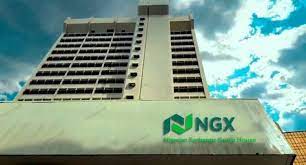The first quarter of 2025 witnessed a nuanced performance in the Nigerian banking sector regarding impairment charges on credit and financial assets. Eight prominent banks collectively incurred N156 billion in such charges, a 5.2% decrease compared to the revised N164.53 billion recorded in the same period of 2024. This overall decline, however, masked significant variations in individual bank performance, reflecting diverse risk appetites, provisioning strategies, and exposure to macroeconomic headwinds, including inflationary pressures, naira depreciation, and liquidity constraints affecting both consumers and businesses. While some banks aggressively wrote off non-performing loans, others adopted more conservative approaches, influencing their respective bottom lines and overall financial health.
Zenith Bank led the pack with the highest impairment charge of N49.38 billion, although this represented an 11.8% decrease year-on-year. This reduction may signal improved asset quality or successful loan recovery initiatives. The bank’s provisions spanned various asset classes, including loans and advances, investment securities, treasury bills, and other financial assets. Despite the substantial provisioning, Zenith Bank demonstrated robust profitability, with profit after tax surging by 20.7%. First HoldCo followed with a N37.25 billion impairment charge, also reflecting a year-on-year decrease. The primary driver was increased provisions on loans and advances, partially offset by reversals in other assets and off-balance sheet items. However, unlike Zenith Bank, First HoldCo experienced a decline in profit after tax.
Access Holdings and Guaranty Trust Holding Company (GTCO) both reported relatively stable impairment charges, suggesting consistent asset quality management. Access Holdings saw a marginal 4.5% decrease, attributing the improvement to tighter risk management and reduced charges on investment securities. This, combined with cost control and income growth, contributed to a 14.7% rise in profit after tax. GTCO’s impairment charge remained virtually flat, with a negligible 0.5% drop. The bank’s provisions primarily focused on Stage 3 loans, categorized as credit-impaired, although recoveries from earlier-stage loans partially mitigated the impact. Despite this stability in impairment charges, GTCO experienced a significant drop in profit after tax.
In contrast to the declining or stable trends observed in the aforementioned banks, United Bank for Africa (UBA), FCMB, and Fidelity Bank showcased contrasting trajectories. UBA recorded a dramatic 332.2% surge in impairment charges, reaching N14.18 billion. This substantial increase stemmed from heightened provisions for credit losses on loans and investment securities, indicating potentially elevated credit risk within its portfolio. Despite this significant rise in impairment charges, UBA achieved impressive profit growth. FCMB, on the other hand, experienced a considerable 59.9% drop in impairment charges, primarily due to significant loan recoveries. This positive development, coupled with improved loan performance, boosted the bank’s profitability. Fidelity Bank’s impairment charge also rose sharply, by 285.8%, reflecting a broader asset write-down alongside depreciation and amortization, details of which were not explicitly disclosed.
Wema Bank, the smallest among the eight analyzed, registered a 64.7% increase in impairment charges, primarily driven by higher provisions on loans and advances, investment securities, and other assets, partially offset by recoveries. This increase indicates growing risk exposure as the bank expands its lending activities. The divergent trends across these banks underscore the varying impact of the challenging macroeconomic environment on their portfolios and the different strategic approaches adopted to manage credit risk.
The varying approaches to impairment charges adopted by Nigerian banks offer valuable insights into their risk appetites and the effectiveness of their internal credit monitoring frameworks. Some banks have proactively addressed potential loan losses through aggressive write-offs, a strategy likened to “biting the bullet.” This proactive approach, though impacting short-term profitability, can strengthen the balance sheet in the long run by removing underperforming assets. Conversely, other banks have taken a more cautious approach, potentially delaying recognition of losses and exposing themselves to greater risk down the line.
The effectiveness of a bank’s loan monitoring system can be gauged by its non-performing loan ratio. Lower ratios generally suggest robust credit monitoring and risk assessment practices. In the prevailing high-interest-rate environment, prudent banks have intensified their scrutiny of sectors particularly vulnerable to interest rate fluctuations and broader macroeconomic volatility. By carefully assessing borrowers’ leverage and gearing ratios, these banks aim to minimize their exposure to high-risk clients and sectors.
Early and proactive loan recovery efforts play a crucial role in mitigating impairment charges. Banks employing efficient recovery strategies, such as loan securitization, can significantly reduce their exposure to potential losses. However, some banks might prioritize short-term income generation even if it entails carrying a higher burden of non-performing loans. This strategy carries inherent risks, especially for banks heavily exposed to sectors sensitive to macroeconomic policies, potentially leading to erratic and unsustainable earnings patterns.
The observed growth in bank earnings is partly attributed to the increased volume of loans disbursed, a trend fueled by inflationary pressures. Sectors with high working capital requirements, such as manufacturing and oil and gas, are driving this loan growth. While this expansion in lending can contribute to revenue growth, it also necessitates careful risk management to prevent a surge in non-performing loans. The sustainability of this earnings growth remains contingent on the trajectory of inflation and the overall health of the macroeconomic environment. The interplay of these factors will continue to shape the performance and profitability of the Nigerian banking sector in the coming quarters.


